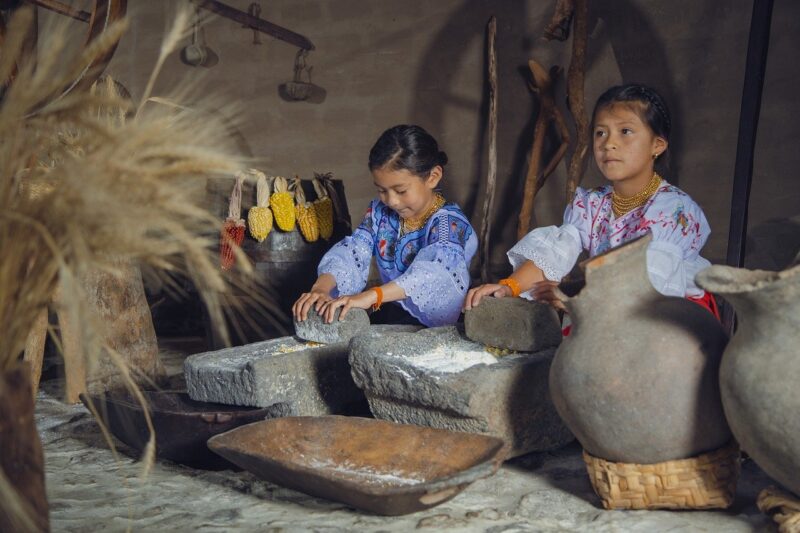The Internet’s Role in Creating Global Trends That Shape Modern Culture
November 17, 2024

The internet has fundamentally transformed how we communicate, share information, and engage with one another, acting as a catalyst for significant cultural shifts. In this evolving digital landscape, we see the emergence of global trends that not only reflect but also shape our shared modern culture. From viral challenges to omnipresent social media influencers, the internet has redefined the way cultural phenomena propagate across borders, altering societal norms and behaviors.
1. Understanding Modern Culture in the Digital Age
Modern culture refers to the collective expressions, ideas, and lifestyles that define contemporary society. In the past, cultural trends were often confined to geographical boundaries, but today, the internet breaks down these barriers, allowing trends to spread rapidly on a global scale. This connectivity transforms isolated cultural expressions into worldwide movements, shaping everything from fashion choices to entertainment preferences.
Key aspects of modern culture influenced by the internet include:
- Increased Accessibility: With just a few clicks, anyone can access music, movies, fashion, and food from around the world, leading to a fusion of cultural elements.
- Instant Communication: The ability to share and comment on trends in real time fosters immediate feedback and discussion, elevating certain content to viral status.
- Viral Trends: From meme culture to viral dance challenges, the internet enables trends to explode overnight, encouraging widespread participation and engagement.
As we delve deeper into the internet’s role in shaping contemporary culture, it’s essential to examine the mechanisms that contribute to these trends and their broader implications on society.
2. The Mechanisms of Trend Creation on the Internet
As a powerful communication tool, the internet operates through several key mechanisms that facilitate trend creation and dissemination:
Social Media Platforms
Social media has become the most significant driver of cultural trends today. Platforms such as Instagram, TikTok, and Twitter enable users to share content widely and participate in trend-driven conversations. Notable features such as hashtags, share buttons, and algorithm-driven feeds amplify visibility. Popular influencers and creators, who have amassed large followings, have the power to make or break trends with a single post.
Some notable impacts of social media on trends include:
- Trend Acceleration: Trends can escalate rapidly, becoming mainstream within days due to widespread sharing and participation.
- Global Reach: A viral trend in one country can be repurposed and adopted worldwide, leading to a form of cultural exchange that was previously impossible.
- Influencer Power: Influencers curate trendy lifestyles, making it easier for brands to penetrate specific demographics and enhance brand loyalty through association with trends.
User-Generated Content (UGC)
The rise of user-generated content has shifted power dynamics in content creation. People not only consume content but also actively participate in its creation. UGC empowers individuals to share their unique perspectives, experiences, and creativity, affecting the evolution and trajectory of cultural trends.
This factor has led to:
- Authenticity: Audiences favor relatable content, enabling grassroots trends that resonate deeply with specific communities.
- Diversification of Trends: Unlike traditional media, which often favors mainstream topics, UGC brings to the forefront niche interests and subcultures, offering a richer tapestry of trends.
By utilizing these mechanisms, the internet allows for a rapid and dynamic exchange of ideas that leads to unprecedented cultural phenomena.
3. Case Studies of Internet-Driven Trends
To understand the power of the internet in influencing modern culture, let’s explore a few notable trends that have gained global traction:
The Ice Bucket Challenge
Originally intended to raise awareness for ALS (Amyotrophic Lateral Sclerosis), the Ice Bucket Challenge went viral on social media in 2014. Thousands of individuals, including celebrities and public figures, filmed themselves dousing cold water over their heads and challenged others to do the same while donating to the cause. The challenge effectively combined entertainment with philanthropy, demonstrating the internet’s capacity to mobilize individuals for a shared purpose.
Key takeaways include:
- Viral Participation: The challenge’s appeal lay in its shareability, fostering a sense of community and camaraderie across the globe.
- Effective Fundraising: The movement successfully raised over $115 million for ALS research, showcasing the potential of online campaigns to create real-world impact.
Trendy Fashion: The Rise of Streetwear
Streetwear, characterized by relaxed silhouettes, bold graphics, and limited releases, has surged in popularity, much of it fueled by social media influencers showcasing products in authentic environments. Brands like Supreme and Off-White have gained cult followings, often leading to sell-out drops.
Reasons contributing to its global rise include:
- Cultural Influence: Streetwear reflects urban culture, drawing inspiration from music, art, and skateboarding communities, resonating deeply with youth culture across continents.
- Accessibility and Affordability: With a focus on inclusivity, streetwear is both affordable and desirable, attracting a large audience of eager consumers eager to align with these trends.
Through these case studies, we observe how the internet not only facilitates the spread of trends but also significantly alters their meaning and impact.
4. Impact on Societal Norms & Values
The internet doesn’t just create trends; it has profound implications for societal norms and values. As these trends become normalized through their digital presence, they influence how we think, behave, and interact:
Shifting Perspectives on Identity
The internet has democratized conversations around identity, leading to increased visibility and appreciation of diversity. Movements advocating for LGBTQ+ rights, racial equality, and mental health awareness have gained traction online. As these discussions break into the mainstream, they challenge conventional norms and pave the way for a more inclusive society.
Changing Consumer Behavior
With the explosion of e-commerce, consumers now have access to an overwhelming selection of products and services. Consumer behavior is influenced by social media, where peers’ opinions and trending products can dictate purchasing decisions. This shift towards digital shopping reflects a cultural change in how people value convenience and speed over traditional retail experiences.
Furthermore, the emergence of sustainability-focused trends encourages consumers to consider the environmental impact of their choices, influencing brands to adapt accordingly. Brands now face increasing pressure to be transparent and engage in responsible practices.
5. Conclusion: The Continuous Evolution of Global Trends
As we navigate through the complexities of modern culture and the internet’s role in shaping global trends, it is essential to recognize that this is just the beginning. The digital landscape continues to evolve, spurred on by emerging technologies such as virtual reality, artificial intelligence, and the rise of generation Z consumers poised to drive future trends.
In conclusion, the internet’s role in creating, spreading, and solidifying global trends is undeniable, affecting our culture in profound ways. As we look toward the future, understanding and embracing this dynamic relationship will be crucial in interpreting the ever-shifting currents of modern culture. Stay tuned, as new trends will undoubtedly rise and redefine our cultural landscape time and time again.








